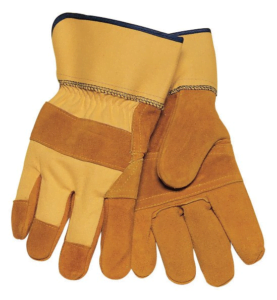Note: If you have a respiratory condition or heart condition, exposure to pepper spray and/or tear gas could trigger a medical emergency. Consider avoiding in person protests and supporting protests by creating first aid kits, raising funds, or by engaging in cyberactivism, artivism, chalktivism, etc.
PREVENTATIVE STEPS
If you plan to protest:
- If you are at higher risk, stay as far away from the front lines as possible. Keeping distance from other protestors will help avoid coronavirus transmission as well as help people be better able to scatter if tear gas canisters/pepper spray is dispersed.
- Watch for signs that police are prepared/preparing to gas including wearing their own protective gear.
- Wear protective gear such as: protective glasses and a mask to cover your nose/mouth; long sleeves and pants (preferably clothing you don’t mind having to dispose of); and head protection (grenade launchers are used to deploy canisters). Best eye wear would be ballistic grade, but even ski maks may help. Careful with regular glasses which can shatter and lead to more injury. Denim or even leather can also help protect from serious injury from rubber bullets.
- A damp towel, bandana, or other cloth over the nose/mouth can greatly reduce the effects of tear gas.
- Bring extra masks or bandanas and store them in a closed plastic bag. If you get pepper-sprayed or gassed, you won’t be able to put the same mask back on and will need a new one.
- Avoid oil based makeup and skincare, including sunscreen (tear gas powder will stick to it). Oil based salves are not recommended for the same reason.
- Avoid wearing contacts if possible.
- Tie down your hair. If you have bangs, wear a headband. Hair falling back into your face after being hit with pepper-spray or tear gas can spread it back into your face.
CARE
If you are exposed to tear gas/pepper spray and/or rubber bullets:
- Stay calm. Leave the area immediately but don’t run because it will cause you to breathe harder. The CDC recommends seeking higher ground if possible, to escape lingering particles and avoid being downwind from them.

- Don’t touch the canisters. They’re hot. If you must, use some kind of mitt. A welder’s mitt is recommended but even an oven mitt offers some protection. Dumping water on the tear gas canister can help stop deployment of additional particulates.
- Rinse your eyes with saline and your face with water. Avoid washing down from the forehead as that can lead to more tear gas powder/pepper spray getting into your eyes.
- Remove contaminated clothing. Cut the clothes off instead of pulling it overhead. Seal clothing in a plastic bag and seal that bag in another plastic bag.
- Wash glasses/eyewear before re-wearing or use a spare. Dispose of any affected contacts (make sure hands are completely clean before removal.)
- Blow nose, rinse mouth, cough/spit. Try not to swallow.

- Use a mixture of liquid antacid and water (L.A.W.) to rise off tear gas dust and neutralize burning. Maalox, milk of magnesia contains a high concentration of magnesia, doesn’t spoil, and is less expensive than other alternatives. There are also many generic brands. Note: Avoid the type with peppermint as it may burn on the skin.
- Go home and take a cool shower immediately with plenty of soap and water. Warm water can reactivate particles.

- The active chemicals in arnica may reduce swelling, decrease pain, and act as antibiotics. If you were hit by rubber bullets and there doesn’t appear to be serious injury, arnica may help with pain and bruising.
Protest Supplies
Backup Protest Kit
- Plenty of water & soap
- Small towel
- Scissors/small pocket knife
- Several plastic bags
- Extra set of clothing
- Extra protective wear such as protective glasses & masks/bandanas (kept in ziplock bags)
- Tissues
- Leather mitts (like welder’s mitt)
First Aid Kit
- Eye Flush (DIY Saline solution)
- L.A.W. (Liquid antacid & water)
- Arnica cream
- DIY herbal compress pads
- Medicated bandages/bandaids/gauze
- Small bottle of hydrogen peroxide
- Neosporin
- OTC or DIY herbal pain relief treatment
Herbal Recipes
DIY Saline Solution (Eye Wash)
- Wash a jar and lid thoroughly with hot water and soap.
- Boil 2 cups of water covered for 15 minutes.
- Allow to cool to room temperature.
- Add 1 teaspoon of salt.
- Add 1 pinch of baking soda (optional.)
- Stir until dissolved.
- Refrigerate in your airtight disinfected container for up to 24 hours. (After that, it should be discarded.)
Herbal Skin Compress
Make an herbal tea infusion using about 1 heaping tablespoon of calendula, lavender, chamomile, and/or marshmallow (or all three!). Cool compresses are used to reduce swelling around injuries.
- Boil water and leave herbs to infuse for 10-15 minutes.
- Allow to cool.
- Strain the plant material.
- Moisten cloth or cotton pads to have a ready-made skin compress for affected skin areas.
- Store in a watertight container until ready to use.
Herbal Pain Tincture
St. John’s Wort tincture can be used to reduce pain related to inflammation of the nerves. Take 3-5 drops.
Recipe
- Collect enough plant material to fill a sterilized glass jar halfway.
- Pour enough alcohol to cover the herb and fill the jar.
- Keep the mixture in a dark place out of direct sunlight.
- Shake the mixture daily for 4 weeks.
- Strain the herb, reserving the liquid.
- Keep the final tincture in a cool and dark place.
Calming Herbal Tea Recipe
- 2 tsp Chamomile flowers
- 1 tsp Skullcap root
- 1 tsp Lemon balm leaf
- Pinch of lavender flowers
Brew. Add desired sweetener. Unwind from an amazing day of showing up.

